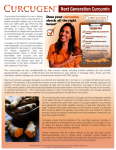Special edition: Prebiotics
Forget 'prebiotics'. Focus on fiber, say brand experts

Sheldon Baker from nutraceutical brand marketing firm Baker Dillon Group, said: ”I believe US consumers not only don’t understand prebiotics, they don’t even know they exist. They were first identified in the mid-90s, but little has been done outside the supplement industry to promote them to the masses.”
And while the use of prebiotics such as inulin and oligofructose might be growing in food and drink as manufacturers used them to increase fiber, reduce calories, fat or sugar, or boost satiety, manufacturers were not shouting about their ‘prebiotic’ effects on the front of pack, said Datamonitor product launch analytics director Tom Vierhile.
By contrast, the term ‘probiotic’ was increasingly appearing on packaging, he said. "In 2010, we logged 63 new food and beverages in the USA featuring the terms ‘probiotic (s)’ or ‘pro biotic(s). That compares to just 16 new product reports featuring the terms ‘prebiotic(s) or ‘pre biotic(s)’.
“That means probiotic claims are nearly four times as common as prebiotic claims for new products in the US. And what’s more, they have moved in opposite directions of late. Prebiotic claims peaked in 2008 (23 reports), and dipped to 16 in 2010.
“By contrast, probiotic reports grew from 47 reports in 2008 to 63 in 2010. This seems to suggest that probiotic supplementation is resonating with consumers, while prebiotics have not gained much traction.”
Substantial knowledge gap
Moreover, surveys repeatedly showed consumers had a greater grasp of probiotics than prebiotics, he added. “MaCorr Research surveyed 2,000 consumers in the USA in 2010 and found that 73% correctly suggested ‘probiotics are used to help maintain the natural balance of organisms in the intestines’.”
But when asked about prebiotics, just 10% could identify what function they performed and almost half said they didn’t know what prebiotics did (compared with 25 percent for probiotics).
“These results indicate a pretty substantial knowledge gap for prebiotics vs probiotics. Since few Americans really know what prebiotics are, it does not suggest a deep level of interest. It sure looks like the prebiotic concept has a lot of ground to make up with the consumer.”
Is fiber the route in for marketers?
But this did not mean prebiotics had no future, merely that the communication strategy needed more work, he said. "I would personally give ‘prebiotic fiber’ the nod, simply because consumers are very familiar with fiber and its health benefits.” But talking about stimulating growth of ‘healthy gut flora’ was “not going to resonate with a significant sector of the population”, he predicted.
Baker agreed. “'Healthy gut flora’ or ‘bifidogenic’ is a mouthful for consumers. As long as marketers stick with the fiber concept, Americans will grasp the positive virtues of prebiotics. Prebiotic fiber potentially could create a whole new fiber category for food marketers, but it will take a segment of the industry with a large marketing budget to educate consumers about the value and importance of prebiotics in order for this category to be successful."
One firm on a mission to do just this is inulin and oligofructose expert Beneo Orafti. While only a "small niche of US consumers who are more sophisticated and nutrition-aware" understood how prebiotics worked, accepted Joseph O’Neill, executive vice president of sales and marketing, most connected fibers with improved digestive function.
"'Prebiotic fiber’ is a good, easily understood and acceptable term. Concepts like 'gut flora' or 'bifidogenic' are less marketing friendly. US consumers are definitely receptive to digestive health messaging, and definitely aware of the links between digestion and whole body health. It’s much less certain that they are as yet ready for a discussion of the specifics of colon physiology or etiology.
"US manufacturers prefer to promote the benefits [of inulin and oligofructose] in terms more readily understood such as fiber, reduced calorie, reduced sugar and reduced fat."
SPINS: Consumers will only grasp prebiotics if they understand probiotics
However, getting consumers to really understand what was so special about prebiotics would require an understanding of probiotics, which had popularized the concept of ‘good bacteria', claimed Kim Elrick, natural products specialist at the SPINS product library.
“In my opinion, the majority of consumers do not understand what prebiotics do, and in order for them to do so, they must have an understanding of probiotics."
NMI: Towards a more holistic view of digestive health
While consumers might not understand the difference between pro- and pre- biotics, the growth of the former should help boost the market potential of the latter, predicted Steve French, executive vice president at the Natural Marketing Institute.
Crucially, the rise of probiotics had also helped change the way consumers thought about digestive health by encouraging a shift from treatment to prevention that could in turn pave the way for a discussion about prebiotics, he said.
“I think probiotics have made people move beyond a short-term mindset – I’ve got constipation so I will take this, or I have bloating or diarrhea, so I will take that - to a longer-term commitment to improving their digestive health, immune system and overall health.”















